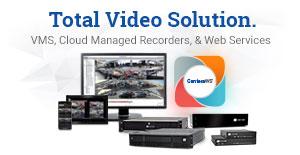Tips on Setting up Video in Manufacturing Facilities

View/download the original article published on A&S Magazine here.
Manufacturing facilities pose a lot of challenges for video surveillance. Obstacles throughout a facility and various lighting and environment factors can make video setup and operation especially difficult. Solutions for manufacturing facilities must therefore cater to the end user’s particular needs.
That’s the argument presented by Arecont Vision in a recent webinar titled “Video Surveillance for Manufacturing Facilities.”
According to Ben Barry, Regional Sales Director at Arecont Vision, plants and factories are different from other use cases in many ways, and as a result end users have specific requirements, for example a minimum amount of cable drops as well as installation in the shortest time possible.
“Some of these facilities are rather large, and they don’t have traditional network running around them, so the fewer switches and ports that are required the better. We also have production equipment, like trains and forklifts, that are running all over the place, so we have to take all these into account,” Barry said. “As these are active production floors, being able to get the install up quickly and being able to limit disruptions to the floor is also very important.”
Other needs include preventing workplace violence, theft and business espionage. But beyond security, video’s role in manufacturing plants also includes looking out for employees’ safety as well as monitoring equipment status. According to Barry, solutions for manufacturing facilities must be able to address those needs to give the end user the convenience and peace of mind that they look for.
He cited as an example Arecont Vision’s own 12 to 20MP multi-sensor cameras with different lens options – from 2.1 to 16 millimeters – to enable operators to get a fuller overview of the production floor as well as equipment status. “Because of the resolution, we are able to dive in and look at the machines. A plant operator can really see whether certain lights are on or certain connections are in place without sending someone to go look at it,” he said. “There is also a lot of dangerous gear and equipment moving, and we are able to digitally zoom in and see multiple things that safety officers would be interested in.”
One model also comes with wide dynamic range functions which Barry said were critical, too. “Some of these facilities are not cooled in the summer time, so they basically open all their doors up, letting the sunlight in, and the ability to see inside and outside is very important as well,” he said.
The cameras come with additional features for example one cable drop, one standard PoE switch port and different mounting options – from corner mounts to pole mounts – to simplify and quicken installation. “The install time is significantly cut,” Barry said. “The up-a-lift and up-a-forklift time is reduced to a few minutes, and everything else can be done in a web browser.”
















